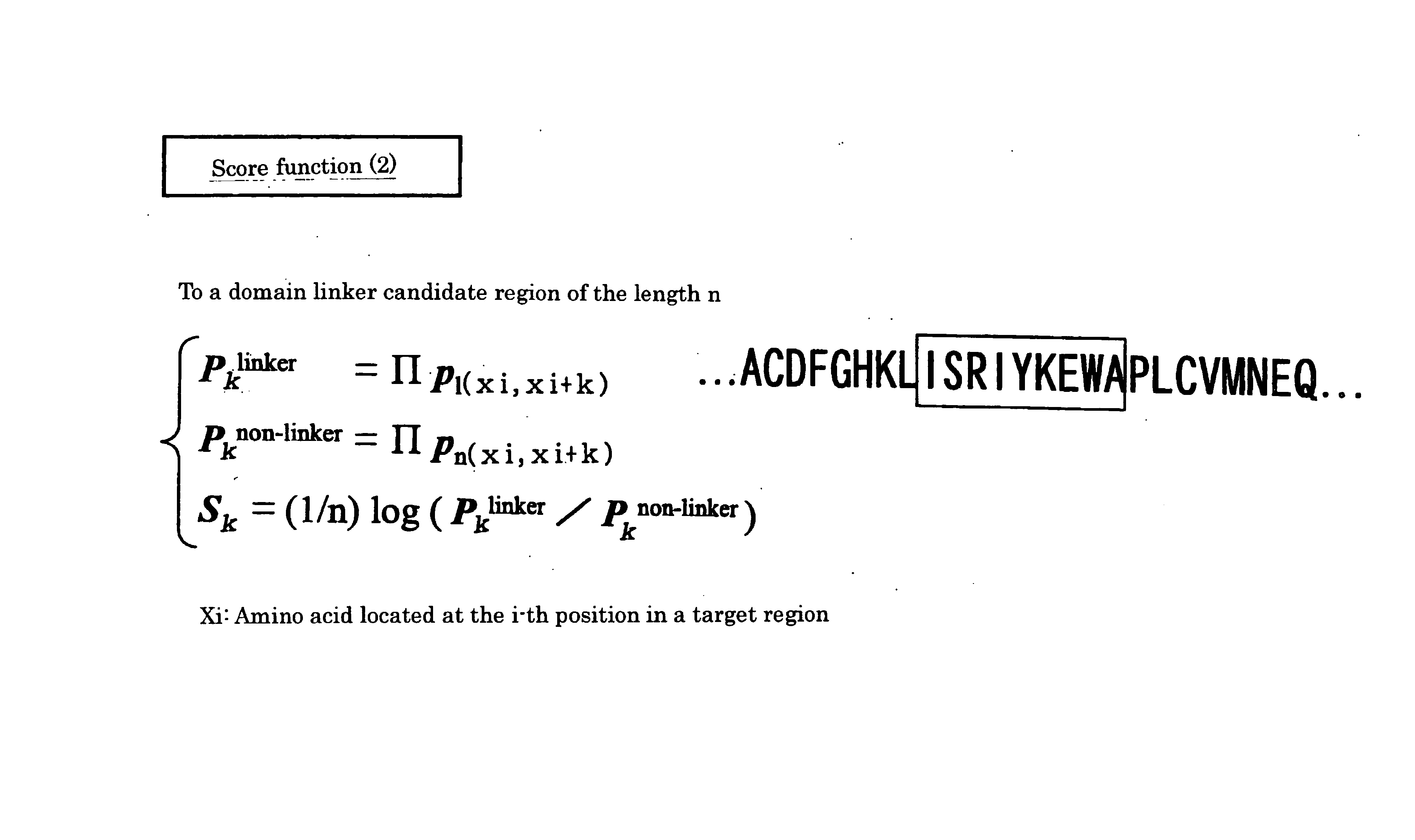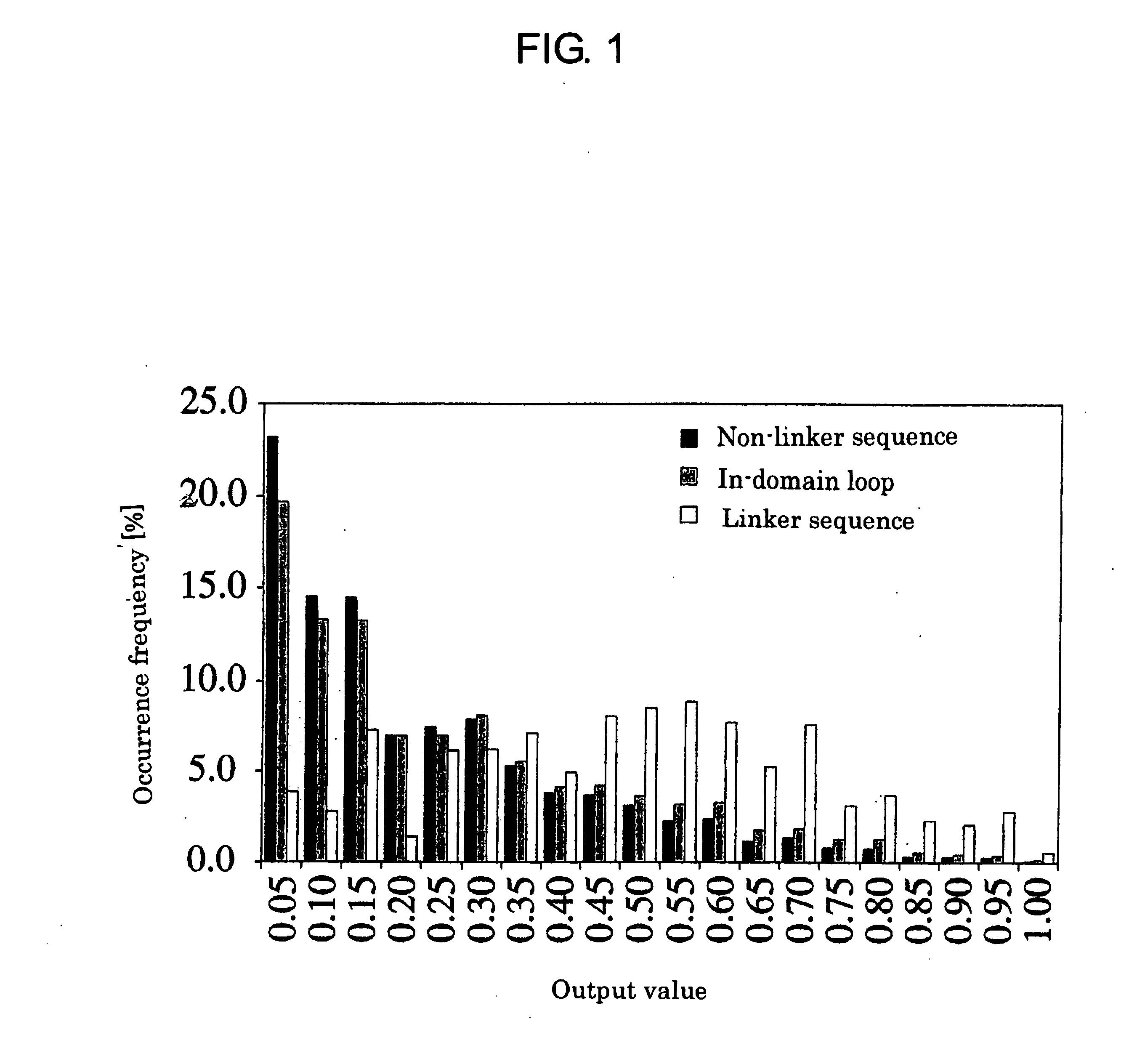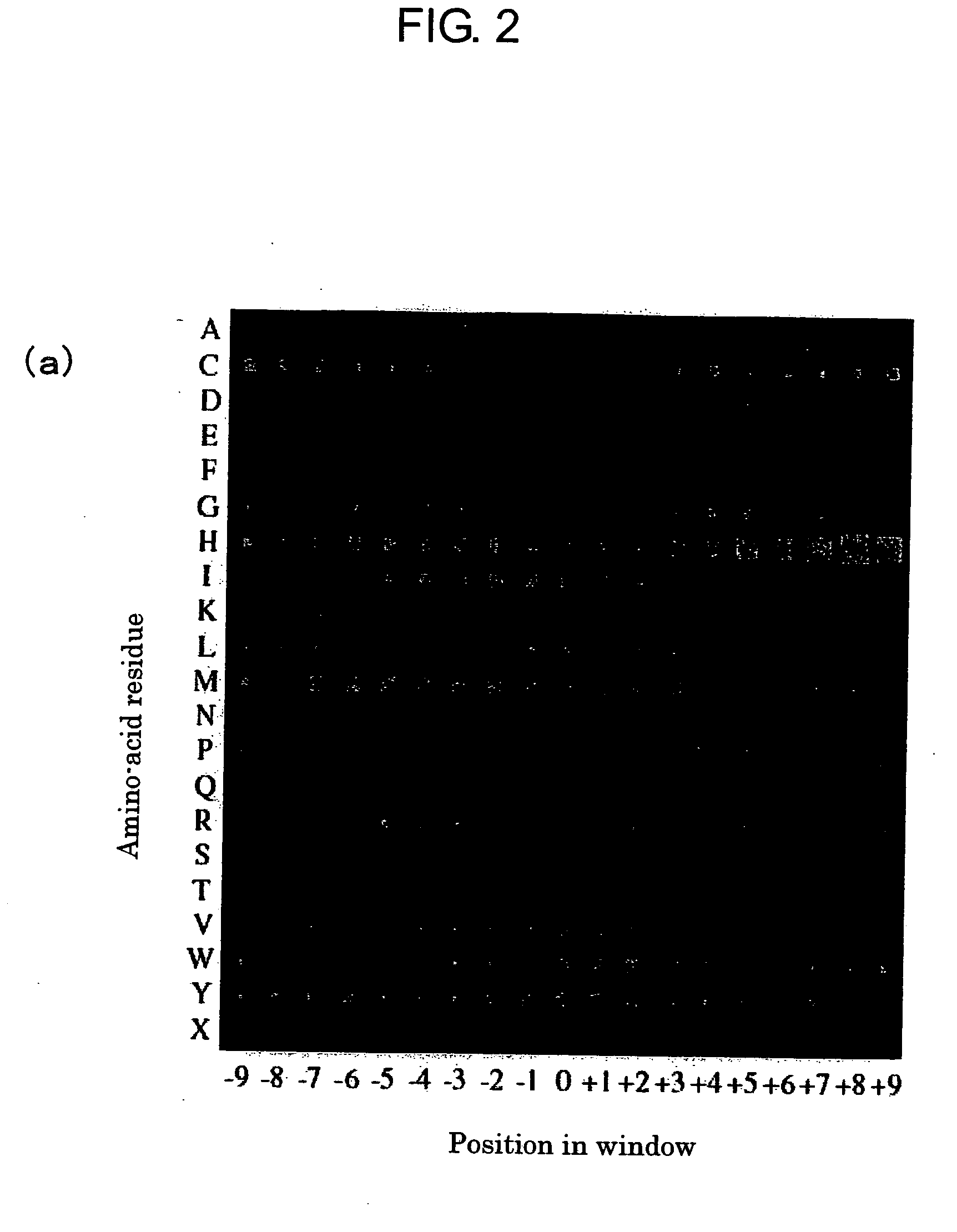Method of presuming domain linker region of protein
- Summary
- Abstract
- Description
- Claims
- Application Information
AI Technical Summary
Benefits of technology
Problems solved by technology
Method used
Image
Examples
embodiment 1
[Embodiment 1] Characterization and Prediction of a Linker Sequence by Neural Network
Result
(a) Domain Sequence Analysis
[0687] First, it was examined if local sequence characteristics exist in a domain linker and if they can be extracted by a neural network. Segments derived from a multi-domain protein are classified into “linker sequence” and “non-linker sequence” depending on whether the amino-acid residue at its center is included in the domain linker or not (See the section on materials and methods). These classified sequences were used for learning of the neural network.
Optimization of Learning Conditions
[0688] Here, the conditions by which the neural network is efficiently trained were examined, and the size of the window (Table 2a) and the number of hidden units (Table 2b) were optimized so as to achieve the maximum learning effect.
[0689] The effect of the window size was evaluated by the proportion of the number of times of correct classification of linkers and non-li...
embodiment 2
[Embodiment 2] Setting of Threshold Value of Output Value (g(X)) of Neural Network
[0714] For the protein sequence of the test data used in Embodiment 1, a window of 19 residues was taken and the sequence fragment of the length of 19 residues was given to the neural network to calculate an output value (a value of 0.0-1.0 was obtained, and this becomes the output value for the residue at the center of the window.). The window was sequentially displaced from the N terminal to the C terminal of the protein, and output was calculated at each position. In preparing distribution, cases are classified depending on whether the residue at the center of the window is a domain linker or not, and the respective distributions were obtained. The neural network used here has three layers, and the number of the hidden units was 2. Also, distribution was obtained by the jackknife test. The results is shown in FIG. 16.
embodiment 3
[Embodiment 3] Preparation of Domain Linker Database
[0715] For 86593 amino-acid sequences registered in SWISSPROT whose structure is totally unknown, prediction was made according to the method in Embodiment 1. The used neural network has three layers, and the number of hidden units was 2.
[0716] Also, prediction was (independently) made with (10 in total) neural networks optimized using 10 pieces of learning data (prepared for the Jackknife test), and the obtained 10 smoothing output values were averaged. In this averaging, the length of the smoothing window (smoothing window length) was set at 19 residues. For this average value (of 10 neural networks), an assumed linker domain was determined under the condition of the cut-off value=0.95, threshold value=0.5. The terminal regions (60 residues) of the protein were all included in the prediction. The linker domains were not ranked here (all the prediction domains were taken).
[0717] The amino-acid sequences predicted as linker seque...
PUM
| Property | Measurement | Unit |
|---|---|---|
| Length | aaaaa | aaaaa |
| Length | aaaaa | aaaaa |
| Mass | aaaaa | aaaaa |
Abstract
Description
Claims
Application Information
 Login to View More
Login to View More - R&D
- Intellectual Property
- Life Sciences
- Materials
- Tech Scout
- Unparalleled Data Quality
- Higher Quality Content
- 60% Fewer Hallucinations
Browse by: Latest US Patents, China's latest patents, Technical Efficacy Thesaurus, Application Domain, Technology Topic, Popular Technical Reports.
© 2025 PatSnap. All rights reserved.Legal|Privacy policy|Modern Slavery Act Transparency Statement|Sitemap|About US| Contact US: help@patsnap.com



